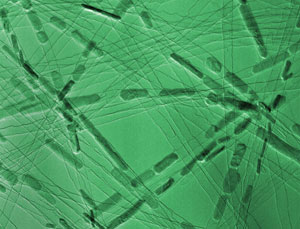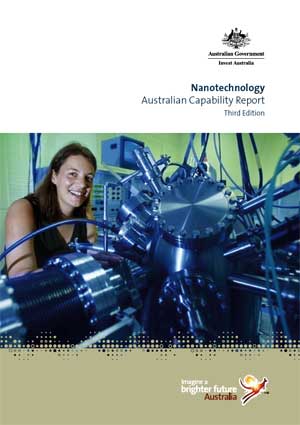Window into nanospace could boost batteries
 Investigating how nickel hydroxide crystals grow in nanospace could lead to improved performance of rechargeable batteries.
Investigating how nickel hydroxide crystals grow in nanospace could lead to improved performance of rechargeable batteries.
Aug 9th, 2007
Read more
 Investigating how nickel hydroxide crystals grow in nanospace could lead to improved performance of rechargeable batteries.
Investigating how nickel hydroxide crystals grow in nanospace could lead to improved performance of rechargeable batteries.
Aug 9th, 2007
Read moreThe single most important application of nanotechnology could be solving the global shortage of clean water - benefiting people in both industrialized and developing countries significantly.
Aug 8th, 2007
Read moreIn a study that eases concern about the toxicity of nanoparticles being considered for use in medical imaging and biomedical research, scientists are reporting "no significant toxic effects" from tests of silica nanoparticles.
Aug 8th, 2007
Read moreThis week the OECD released a new document which provides information on current/planned activities related to the safety of manufactured nanomaterials in OECD member countries.
Aug 8th, 2007
Read morePurdue researchers have developed new miniature devices designed to be implanted in the brain to predict and prevent epileptic seizures and a nanotechnology sensor for implantation in the eye to treat glaucoma.
Aug 7th, 2007
Read moreThe aim of the conference is to provide an international platform where a diverse community of professionals from industry, academia and fashion can come together to share information, research findings and practical experiences.
Aug 7th, 2007
Read more Invest Australia, the Australian Government's inward investment agency, has produced a summary of Australian nanotechnology capability from both companies and research organisations.
Invest Australia, the Australian Government's inward investment agency, has produced a summary of Australian nanotechnology capability from both companies and research organisations.
Aug 7th, 2007
Read moreLike navigating spacecraft through the solar system by means of gravity and small propulsive bursts, researchers can guide atoms, molecules and chemical reactions by utilizing the forces that bind nuclei and electrons into molecules (analogous to gravity) and by using light for propulsion.
Aug 7th, 2007
Read moreTiny vibrating silicon resonators are of intense interest in nanotechnology circles for their potential ability to detect bacteria, viruses, DNA and other biological molecules.
Aug 6th, 2007
Read moreBridge skin could reveal cracks and corrosion beneath.
Aug 6th, 2007
Read moreAlumnus Krishna Singh gives $20 million to Penn's School of Engineering and Applied Science.
Aug 6th, 2007
Read moreCombining nanoparticles of boric acid - known primarily as a mild antiseptic and eye cleanser = with traditional motor oils improves their lubricity and by doing so increase energy efficiency.
Aug 6th, 2007
Read moreScientists have discovered a new way of levitating tiny objects - paving the way for future applications in nanotechnology.
Aug 6th, 2007
Read moreResearchers explore 'deep trap' phenomenon.
Aug 6th, 2007
Read moreThe Nanotechnology Engagement Group, a UK group established to support public bodies in developing a wider programme of social and ethical research and public dialogue around nanotechnology, has released its final report.
Aug 4th, 2007
Read moreNanobiotechnology could be used as a measure of happiness, stress levels and health.
Aug 4th, 2007
Read more